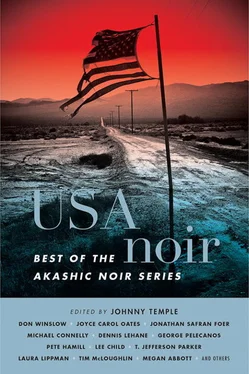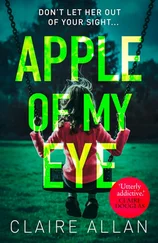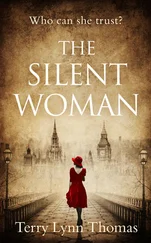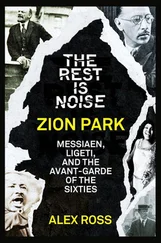Johnny Temple - USA Noir - Best of the Akashic Noir Series
Здесь есть возможность читать онлайн «Johnny Temple - USA Noir - Best of the Akashic Noir Series» весь текст электронной книги совершенно бесплатно (целиком полную версию без сокращений). В некоторых случаях можно слушать аудио, скачать через торрент в формате fb2 и присутствует краткое содержание. Город: New York, Год выпуска: 2013, ISBN: 2013, Издательство: Akashic Books, Жанр: Триллер, Детектив, на английском языке. Описание произведения, (предисловие) а так же отзывы посетителей доступны на портале библиотеки ЛибКат.
- Название:USA Noir: Best of the Akashic Noir Series
- Автор:
- Издательство:Akashic Books
- Жанр:
- Год:2013
- Город:New York
- ISBN:978-1-61775-189-9
- Рейтинг книги:3 / 5. Голосов: 1
-
Избранное:Добавить в избранное
- Отзывы:
-
Ваша оценка:
- 60
- 1
- 2
- 3
- 4
- 5
USA Noir: Best of the Akashic Noir Series: краткое содержание, описание и аннотация
Предлагаем к чтению аннотацию, описание, краткое содержание или предисловие (зависит от того, что написал сам автор книги «USA Noir: Best of the Akashic Noir Series»). Если вы не нашли необходимую информацию о книге — напишите в комментариях, мы постараемся отыскать её.
USA Noir: Best of the Akashic Noir Series — читать онлайн бесплатно полную книгу (весь текст) целиком
Ниже представлен текст книги, разбитый по страницам. Система сохранения места последней прочитанной страницы, позволяет с удобством читать онлайн бесплатно книгу «USA Noir: Best of the Akashic Noir Series», без необходимости каждый раз заново искать на чём Вы остановились. Поставьте закладку, и сможете в любой момент перейти на страницу, на которой закончили чтение.
Интервал:
Закладка:
A few weeks later—exactly a month later, I was to learn—I saw the vehicle again, this time crawling down Prospect Avenue. I was stopped at a corner, not waiting for the light to change, not waiting for anything that might actually happen.
“Any idea what that is?” I asked a student who was standing at the curb beside me. Her quick double-take suggested recognition.
“Google,” she said.
“Google what?” I asked, but wanting far more to know what she thought of me, and how other students on campus were talking about and judging me.
“Street view.”
“Which is what?”
She sighed, just in case there was any doubt about her reluctance to engage with me. “That thing above the car is a camera with nine lenses. Every second it takes a photograph in each direction, and they’re stitched together into a map.”
“What kind of map?”
“It’s 3-D and can be navigated.”
“I thought you used a map for navigating.”
“Yeah, well.”
She was finished with me, but I wasn’t ready to let her go. It’s not that I cared about the map—and if I had, I could have easily found better answers elsewhere. But her reluctance to speak with me—even to be seen standing beside me—compelled me to keep her there.
I asked, “No one minds having all of these pictures taken all the time?”
“A lot of people mind,” she said, rummaging through her bag for nothing.
“But no one does anything about it?”
The light changed. I didn’t move. As the student walked away, I thought I heard her say, “Fucking pig.” I’m virtually positive that’s what she said.
A few days earlier, while eating pasta out of the colander, I’d heard an NPR piece about something called “the uncanny valley.” Apparently, when we are presented with an imitation of life—a cartoon, a robot-looking robot—we are happily willing to engage with it: to hear its stories, converse with it, even empathize. (Charlie Brown’s face, characterized by only a few marks, is a good example.) We continue to be comfortable with imitations as they more and more closely resemble life. But there comes a point—say, when the imitation is 98 percent lifelike (whatever that means)—when we become deeply unsettled, in an interesting way. We feel some repulsion, some alienation, some caveman reflex akin to what happens when nails are run down a blackboard.
We are happy with the fake, and happy with the real, but the near real—the too near real—unnerves us. (This has been demonstrated in monkeys as well. When presented with near-lifelike monkey heads, they will go to the corners of their cages and cover their faces.) Once the imitation is fully believable—100 percent believable—we are again comfortable, even though we know it is an imitation of life. That distance between the 98 percent and 100 percent is the uncanny valley. It was only in the last five years that our imitations of life got good enough—movies with digitally rendered humans, robots with highly articulated musculature—to generate this new human feeling.
The experience of navigating the map fell, for me, into the uncanny valley. Perhaps this is because at forty-six I was already too old to move comfortably within it. Even in those moments when I forgot that I was looking at a screen, I was aware of the finger movements necessary to guide my journey. To my students—my former students—I imagine it would be second nature. Or first nature.
I could advance down streets, almost as if walking, but not at all like walking. It wasn’t gliding, or rolling or skating. It was something more like being stationary, with the world gliding or rolling or skating toward me. I could turn my “head,” look up and down—the world pivoting around my fixed perspective. It was too much like the world.
Google is forthright about how the map is made—why shouldn’t they be?—and I learned that the photos are regularly updated. (Users couldn’t tolerate the dissonance of looking at snow in the summer, or the math building that was torn down three months ago. While such errors would put the map safely on the far side of the uncanny valley, it would also render it entirely uninteresting—if every bit as useful.) Princeton, I learned, is reshot on the fourth of every month.
I wanted to walk to the living room, find my wife reading in her chair, and tell her about it.
The investigation never went anywhere because there was nowhere for it to go. (It was never even clear just what they were investigating.) I’d had two previous relationships with graduate students—explicitly permitted by the university—and they were held up as evidence. Evidence of what ? Evidence that past the appropriate age I had sexual hunger. Why couldn’t I simply repress it? Why did I have to have it at all? My persistent character was my character flaw.
The whole thing was a farce, and as always it boiled down to contradictory memories. No one on a college campus wants to stand up to defend the right of an accused harasser to remain innocent until proven guilty. The university privately settled with the girl’s family, and I was left with severely diminished stature in the department, and alienated from almost all of my colleagues and friends. I believed they believed me, and didn’t blame them for distancing themselves.
I found myself sitting in coffee shops for hours, reading sections of the newspaper I never used to touch, eating fewer meals on plates, and for the first time in my adult life, going for long, directionless walks.
The first night of my forced freedom, I walked for hours. I left the disciplinary committee meeting, took rights and lefts without any thought to where they might lead me, and didn’t get back to my house until early the next morning. My earphones protected me from one kind of loneliness, and I walked beyond the reach of the local NPR affiliate—like a letter so long it switches from black pen to blue, the station became country music.
At some point, I found myself in the middle of a field. Apparently I was the kind of person who left the road, the kind of person who walked on grass. The stars were as clear as I’d ever seen them. How old are you? I wondered. How many of you are dead? I thought, for the first time in a long while, about my parents: my father asleep on the sofa, his chest blanketed with news that was already ancient by the time it was delivered that morning. The thought entered my mind that he had probably bought his last shirt. Where did that thought come from? Why did it come? I thought about the map: like the stars, its images are sent to us from the past. And it’s also confusing.
I thought that maybe if I took a picture of the constellations, I could e-mail them to my wife with some pithy thumb-typed sentiment— Wish you were here —and maybe, despite knowing the ease and cheapness of such words, she would be moved. Maybe two smart people who knew better could retract into the shell of an empty gesture and hide out there for at least a while.
I aimed the phone up and took a picture, but the flash washed out all of the stars. I turned off the flash, but the “shutter” stayed open for so long, trying to sip up any of the little light it could, that my infinitesimally small movements made everything blurry. I took another picture, holding my hand as still as I could, but it was still a blur. I braced my arm with my other hand, but it was still a blur.
On the fourth of the next month, I waited on the corner of Nassau and Olden. When the vehicle came, I didn’t wave or even smile, but stood there like an animal in a diorama. I went home, opened my laptop, and dropped myself down at the corner of Nassau and Olden. I spun the world, so that I faced northwest. There I was.
Читать дальшеИнтервал:
Закладка:
Похожие книги на «USA Noir: Best of the Akashic Noir Series»
Представляем Вашему вниманию похожие книги на «USA Noir: Best of the Akashic Noir Series» списком для выбора. Мы отобрали схожую по названию и смыслу литературу в надежде предоставить читателям больше вариантов отыскать новые, интересные, ещё непрочитанные произведения.
Обсуждение, отзывы о книге «USA Noir: Best of the Akashic Noir Series» и просто собственные мнения читателей. Оставьте ваши комментарии, напишите, что Вы думаете о произведении, его смысле или главных героях. Укажите что конкретно понравилось, а что нет, и почему Вы так считаете.












